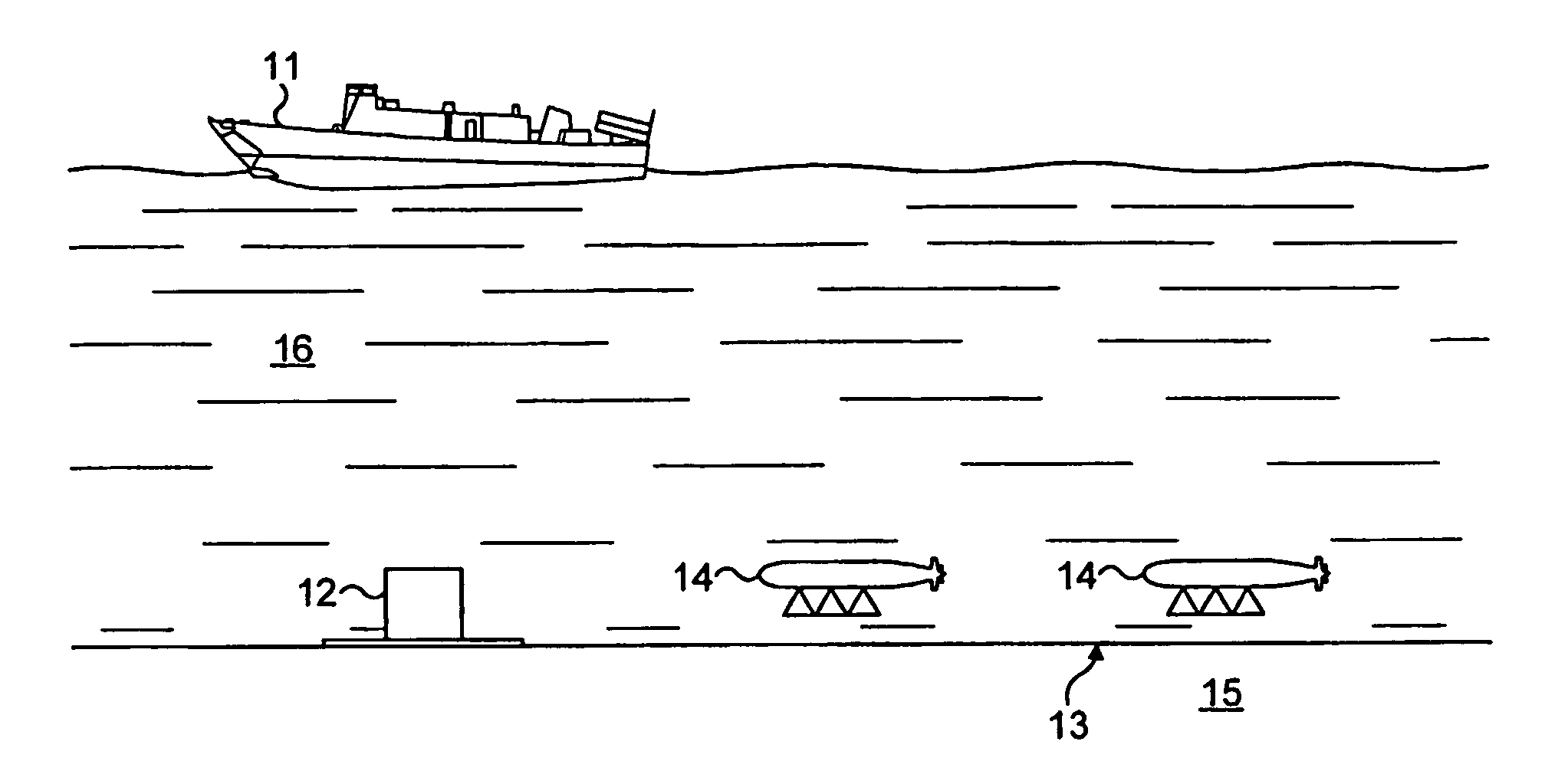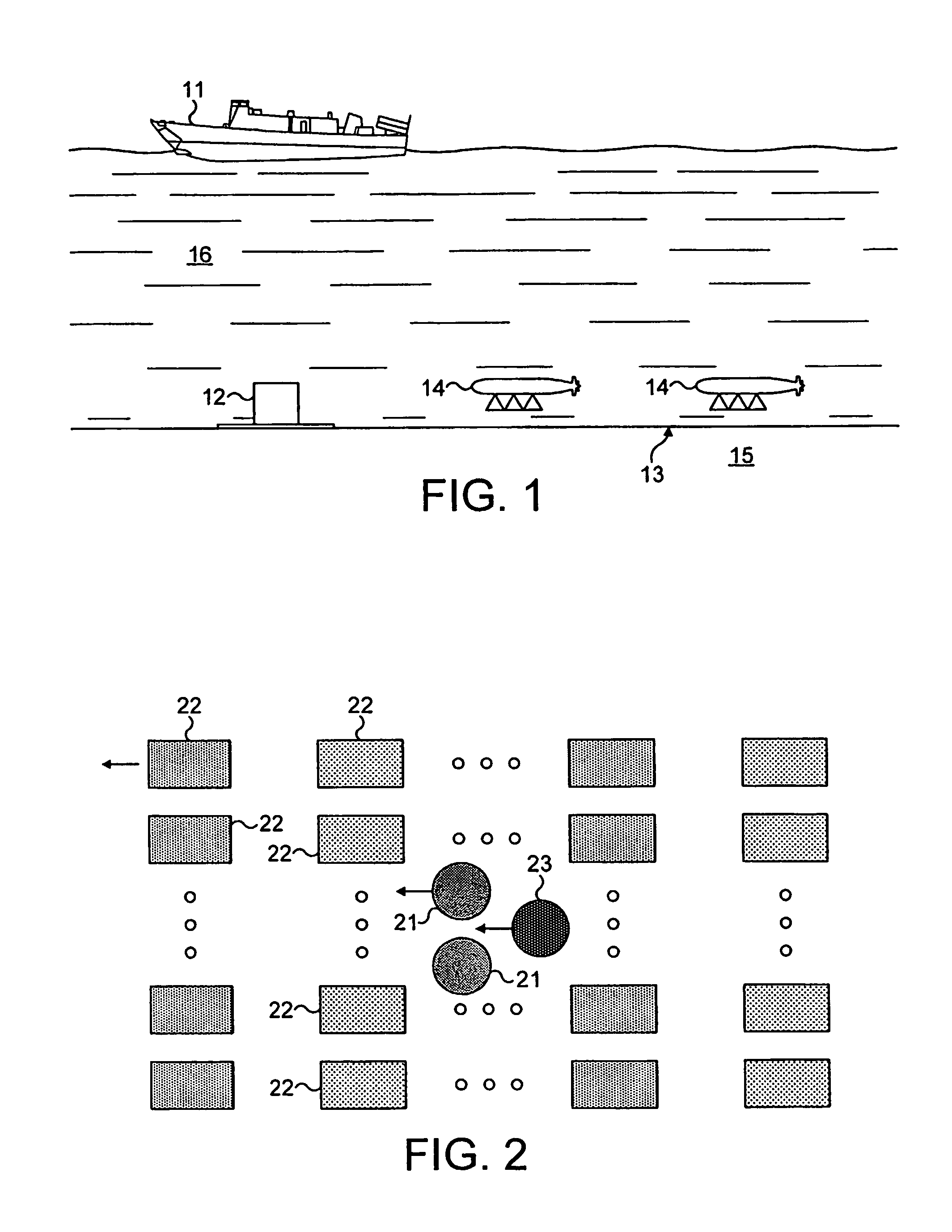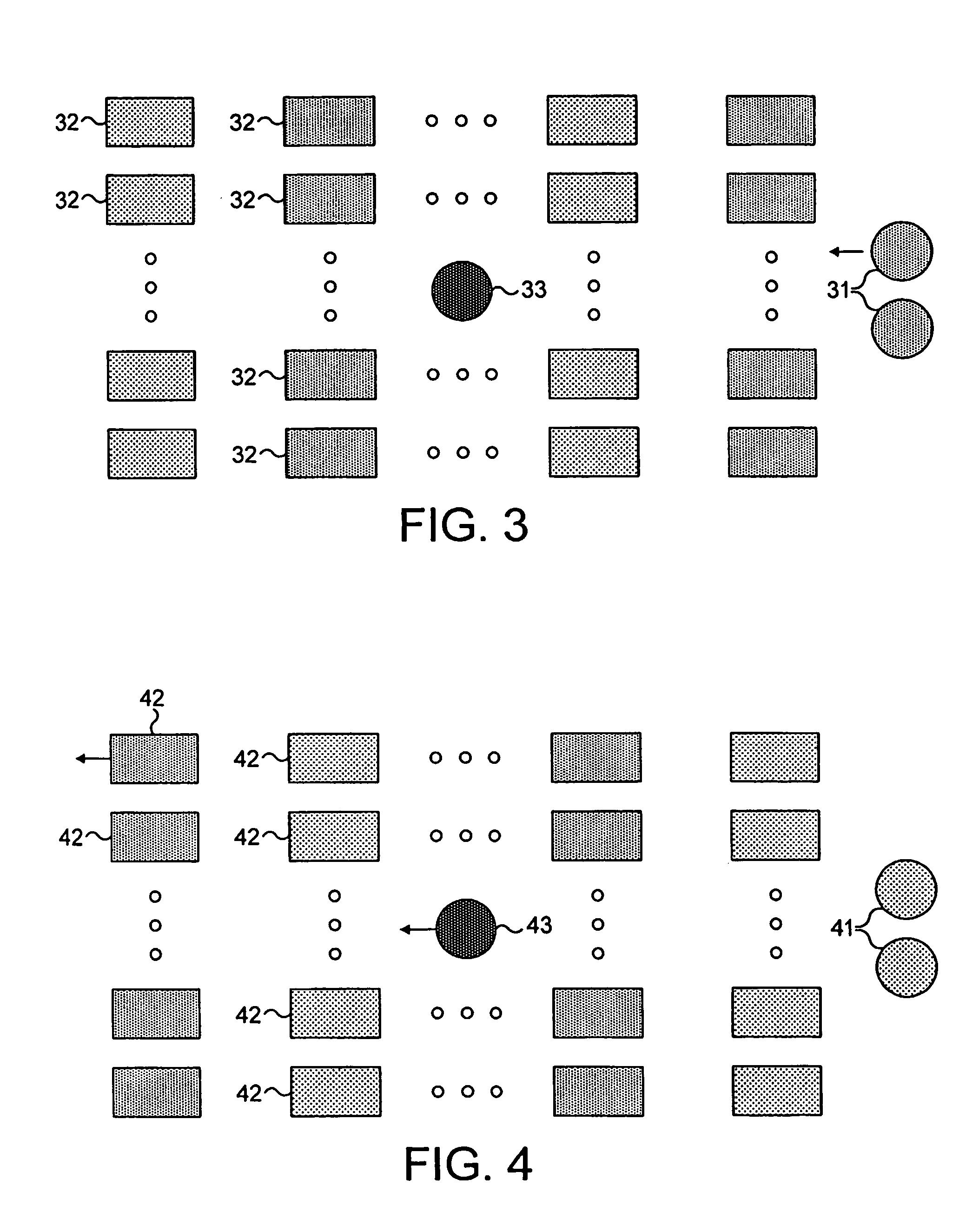Seismic exploration and imaging system for producing survey reports of subsea geological structures
a seismic imaging and subsurface technology, applied in the direction of optical radiation measurement, instruments, spectrometry/spectrophotometry/monochromators, etc., can solve the problems of ineffective 4c acquisition system, ineffective 4c imaging system, and prohibitively expensive cost of geophone positioning and re-positioning on the sea bed
- Summary
- Abstract
- Description
- Claims
- Application Information
AI Technical Summary
Benefits of technology
Problems solved by technology
Method used
Image
Examples
Embodiment Construction
[0036]Referring to FIG. 1, the operation is controlled by a surface vessel 11. A seismic source 12 is located on the seabed 13 and a series of mobile camera units 14 (of which two are shown) monitor the response at the seabed 13 to a seismic wave generated by the source 12. The camera units 14 are positioned about a metre above the seabed 13.
[0037]The camera units 14 each include a light transmitter, a receiver, a hydrophone, an accelerometer and a processing unit. The transmitter transmits light in the form of expanding rays, concentrated rays, modulated light and / or three independent rays. The receiver may comprise a full field array, a coupled array or a single detector.
[0038]The hydrophone is present to measure seismic P-waves above the sea bottom 13. The accelerometer measures camera oscillations in the 0-200 Hz range. The processing unit serves to filter noise (camera oscillations) from the measurements taken, to recognise and detect image objects, to measure image object valu...
PUM
 Login to View More
Login to View More Abstract
Description
Claims
Application Information
 Login to View More
Login to View More - R&D
- Intellectual Property
- Life Sciences
- Materials
- Tech Scout
- Unparalleled Data Quality
- Higher Quality Content
- 60% Fewer Hallucinations
Browse by: Latest US Patents, China's latest patents, Technical Efficacy Thesaurus, Application Domain, Technology Topic, Popular Technical Reports.
© 2025 PatSnap. All rights reserved.Legal|Privacy policy|Modern Slavery Act Transparency Statement|Sitemap|About US| Contact US: help@patsnap.com



